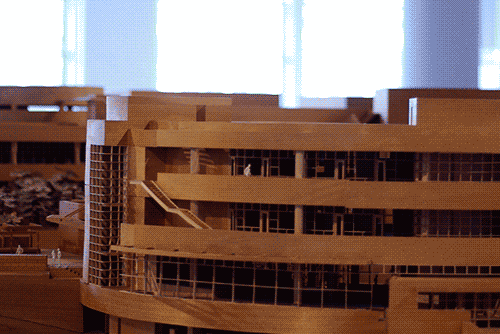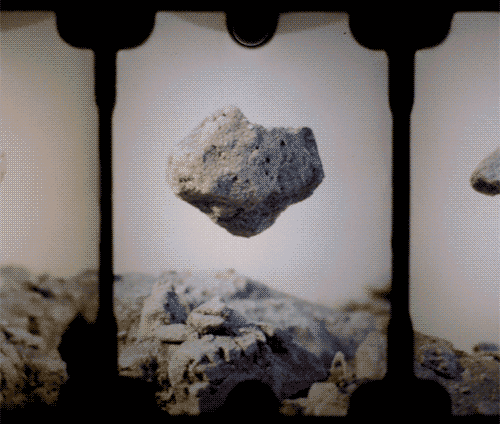Photo

Os Gêmeos
Sem Titulo (Untitled)
2008-2010
Mixed media
98 notes
·
View notes
Photo

Eduardo Basualdo
Split Knife/Infinito
2012
Plinth, metal, wood
33 notes
·
View notes
Photo

Richard Meier Model Museum
505 notes
·
View notes
Photo

Marcelo Moscheta
Anti-Gravitational Magnetic Pole
62 Stones
2009
62 photographs on transparency film, aluminum boxes, LEDs lamps, wires and electrical components, PVC, plexiglass, iron and steel wires
133 notes
·
View notes
Photo

53 notes
·
View notes
Photo

From Vespasian
to Trajan
Roman Portraits AD 68–117
The suicide of Nero in 68 led to civil war, with three emperors in a row during 69. An army commander, Vespasian, brought a new dynasty to power, the Flavians, His sons Titus and Domitian succeeded hi, the latter being murdered in 96. A System of adoption was then introduced, with Trajan as the first of the ‘Adoptive Emperors’.
Room 13 has imperial portraits in three typical sizes ,colossal, natural and miniature. Just as typical are the bust and statue formats. Like other emperors, Trajan might appear in the guise of Greek Hero or with divine attributes. Wealthy Romans followed suit: A fine lady might become Venus herself! her coiffure joins others in the room in a show of hairstyles.
97 notes
·
View notes
Photo

Cast of Torso Found on Thasos 1987
Painted Reconstruction of Torso Found on Thasos
134 notes
·
View notes
Photo

Figures of woman wearing numerous pieces of jewellery and splendid garments, carrying flower buds or a lotus symbolizing rebirth, might be goddesses themselves. The painted head was once covered by an added veil.
600-500 BC
34 notes
·
View notes
Photo

Goddess and a Place of Sacrifice?
The goddess of the underworld sits on a throne, guarded by sphinxes and holding in her hand a pomegranate which by virtue of its multitude of seeds and blood-red juice was a symbol of fertility and new life. The goddess has been placed in a tomb. The head can be removed, and the figure is hallow throughout. Perhaps the actual statue was used to pour libations through to the ancestors and the gods in the underworld.
ca. 450 BC
52 notes
·
View notes
Photo

A Roman Boy
Found in the Licinian Tomb in Rome
AD 30-50. Marble.
The coiffure with the hair combed forward corresponds to the hairstyle of the adults. Child-portraits did not become common in Rome until the reign of Augustus.
124 notes
·
View notes
Photo

Herman Wilhem Bissen
1798-1868 Danish
A Victorious Danish Soldier
1850-51
Plaster
Bissen pays homage to the Danish food soldiers (privates) from the war in 1848-51, where the Danish government prevented the duchies of Schleswig and Holstein from leaving the Kingdom of Denmark. The sculpture springs form the same political soil as the landscape paintings form the period and is fueled by the same nationalist sentiments.
The sculpture marks the first time in European history that a memorial to military victory did not show a goddess, a general. or a monarch, but a simple, anonymous soldier from the battlefields. However, the figure’s face bears a striking resemblance to the painter Johan Thomas Lundbye, who fell in the war.
The sculpture is a preliminary study for the war memorial commemorating the battle at Fredericia in 1849: the monument was erected in 1858.
#gif#museumgifs#museum gifs#national gallery of denmark#statens museum for kunst#herman vilhem bissen#bissen#dansk#danish
27 notes
·
View notes
Photo

Benedetto Briosco
1460-1526 Italian
Head of a Woman. Fragment of a statue
1477-1514
Marble
18 notes
·
View notes
Photo

Peter Land
1966- Danish
Untitled (Sitting man, with dots on blue carpet)
2003
Painted fiberglass cast, cloth, blanket
187 notes
·
View notes



